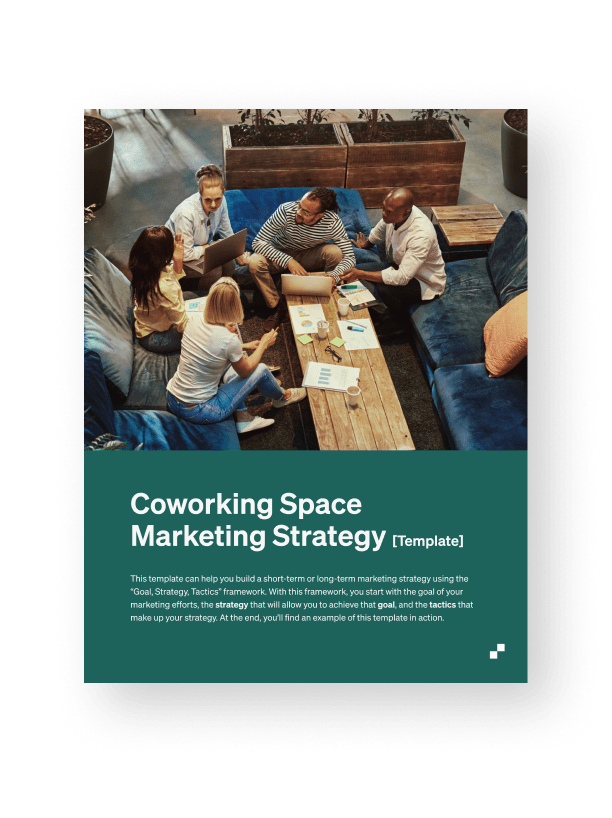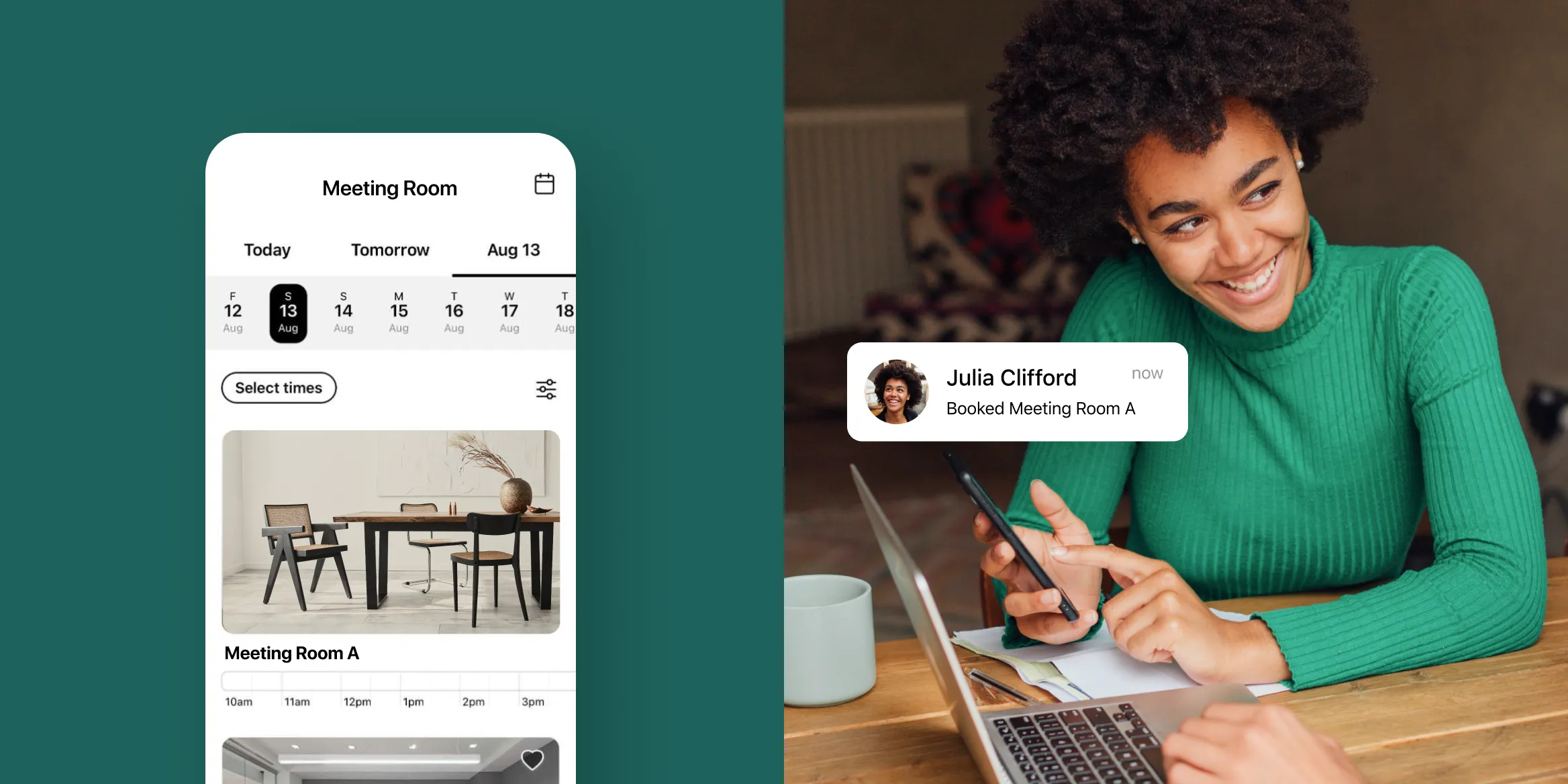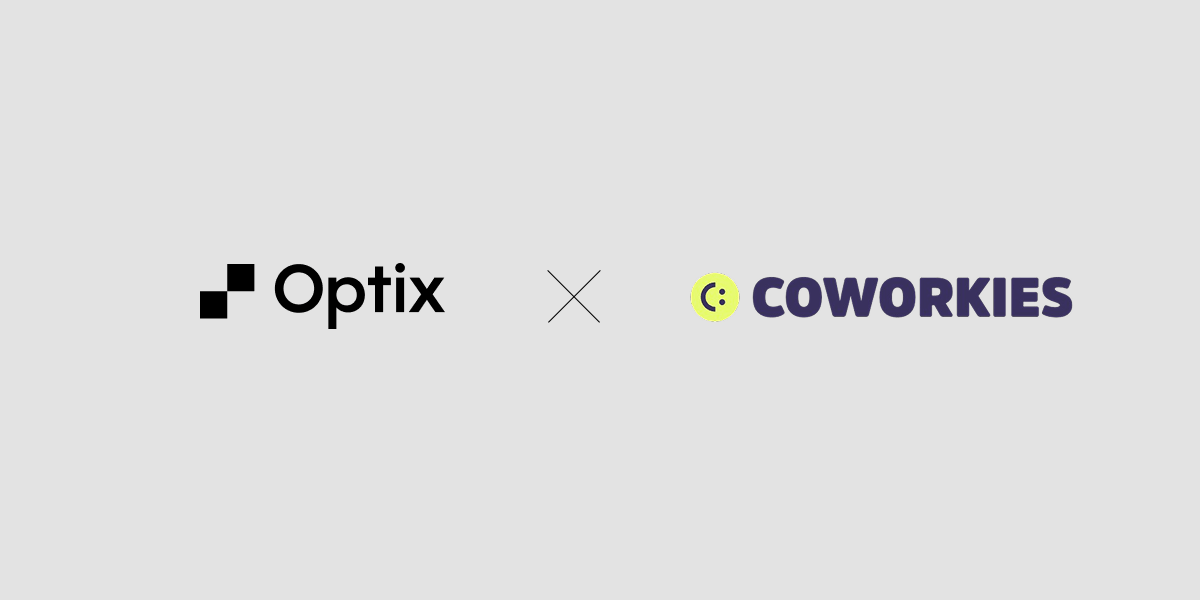
You’ve just been hired as a community manager at your local coworking space, and you couldn’t be more excited.
You’ve never worked in a coworking space before, but you do have some hospitality experience, and you’re looking forward to connecting with members of the community.
Within a week, you quickly realize that there is a lot more to being a community manager than making coffee and saying hi to members. You also have to unclog the toilet, keep track of the sales cycle, organize a happy hour every week, troubleshoot the WiFi, and make sure the website is up to date, all while creating an exceptional member experience.
It really is the hardest job in coworking.
If you’re feeling overwhelmed by your new role, fear not! We’ll introduce you to some of the essential sales and marketing skills that every community manager should know about.
By the end of this article, you’ll feel confident in owning sales and marketing for your community.
Get your free Marketing Strategy Template

Why do coworking community managers need to understand sales and marketing?
Although the community manager role varies wildly from space to space, most operators do have their community managers involved in sales and marketing to some extent – whether that means posting on social media or sending a follow-up email after a tour.
To elevate yourself as a community manager and make yourself indispensable to the team, it is in your best interest to have a basic understanding of sales and marketing in a coworking space.
For example, Adam Hyman, Founder at KoWorks, has his community managers manage much of the sales cycle. This includes reaching out to leads, giving a tour, and following up on why someone did or didn’t convert.
Learn more about Adam and his approach to coworking in our webinar replay, How to Grow Your Coworking Space in 2024: Acquisition.
Which sales and marketing tactics is a community manager usually responsible for?
Most community managers are responsible for some combination of sales and marketing tactics including:
- Managing social media accounts
- Facilitating tours
- Following up with potential leads
- Writing blogs or create other marketing content
- Organizing events
- Sending email reminders
- Reaching out to cold leads
In addition to the tactics listed above, community managers are often expected to know their numbers. This means understanding how many people are coming in for tours, how often people are converting, and more.
In our article, How to Hire a Coworking Space Manager, we spoke at length about the roles and responsibilities of a typical community manager. For more information about general community manager responsibilities, you can refer to that article.
Marketing Skills for Coworking Community Managers

Now that you understand why you should have a basic understanding of sales and marketing in a coworking space and which tactics you may be responsible for, it’s time to take a closer look at each of the tactics in detail.
The tactics or skills that we’ll walk through are what we most commonly see community managers own based on conversations with our clients. However, it is not comprehensive. Every space is different and what is required of you as a community manager will depend on the unique needs of the space.
With that being said, let’s take a closer look at three of the top marketing skills every coworking community manager should understand.
1. Email marketing
Email remains one of the most popular (and most effective) marketing tactics for businesses today. Most coworking spaces will use email not just to communicate important events and announcements to members, but also to delight members with valuable content.
We often see community managers responsible for email marketing, so this is an important skill to understand. There are a few types of emails we commonly see being sent to members.
- Welcome email (automatic): an automatic email that is sent to new members after they sign up for the space. It outlines important onboarding information, including how to access the building and who the point of contact is
- Announcements (regular): a bulk email that is sent to members ad-hoc informing them of upcoming events or important announcements
- Monthly newsletters (regular): a newsletter that is sent each month around the same time
When it comes to email, your manager or operator will usually be the one giving the direction on what to send and when. Ask for training on how to use the email service provider or platform that the space uses.
One email task that we do often see community managers owning is creating or optimizing the monthly newsletter. This is an opportunity to create something valuable for your community in a fun and creative way!
If this is something you’re tasked with or you want to be proactive in creating a valuable piece of content, follow the tips below.
Creating a monthly email newsletter for your coworking community
- Align on a few themed sections that you can include in your newsletter each month. Examples include upcoming events, special announcements, and member spotlight.
- Create an easy to follow template in your email service provider that you can reuse each month.
- Leverage easy-to-use design tools like Canva to create graphics for your newsletter.
- Write a compelling subject line each month and keep track of which subject lines perform best.
- Focus on the value that you can bring to your community, rather than using your newsletter to just sell your services.
Check out this article to learn more about email marketing for your coworking business.
2. Social media management
Social media management is one of, if not the most common marketing responsibility we see community managers take on.
This could include anything from creating social content to posting content on social media profiles to digital community management (replying to comments, replying to messages, etc.)
Here are our best tips when it comes to managing a social media profile for a coworking space.
- Understand your role in social media before you start: during the interview process, ask about your level of involvement in the space’s social media account. In many cases, community managers are expected to be the face of the brand, and there may be an expectation that you will be filmed on camera for social media. As this can be a deal breaker for many, it’s best to have this information early on in the interview process.
- Create a system for yourself to keep your tasks organized: consider using a popular task management tool like Asana or Notion to keep track of what you need to post, on which channel, and when. You may also want to consider using a social media scheduling tool like Later to streamline posting on multiple platforms, especially if your space has a large social media presence.
- Narrow your efforts to channels popular among your target audience: it’s easy to feel like you need to be on every platform to win the social media game. However, it’s oftentimes better to have a strong presence on one platform than to spread yourself thin across too many. Narrow your efforts and focus on the 1-2 channels that you know your target audience uses. For many coworking spaces, that often ends up being Instagram and/or Facebook.
- Focus on making your brand memorable, rather than just self-promotion: when creating content, think about providing value first and promoting second. People go on social media because they want to be entertained or informed, not necessarily because they are ready to convert right now. Think about how you can use social media to build relationships with current and future members, rather than just sell your space. In turn, the community you build will help attract members long-term.
Check out this article to learn more about social media marketing for your coworking business.
3. Organizing events
Finally, the third most common marketing tactic that we see community managers own is organizing events. Events are invaluable to a coworking business. They can help attract new members to your space, while strengthening relationships amongst existing members.
Planning a memorable event for your community is an art and a science. In most cases, community managers will be expected to facilitate existing events in the community (such as open houses or monthly happy hours) with the opportunity to add additional programming that the community would enjoy (such as an art walk or weekly yoga session). The secret to creating a great event? Think about what your members want and what would benefit them the most.
The best way to get these insights is to collect feedback via a coworking survey. Here are a few questions you can ask:
- What past events have you enjoyed the most? The least?
- What kind of events would you like to see more of?
- Do you prefer online or in-person events?
- What are you interested in learning about? (select from a few listed choices)
- What’s your preferred way of networking (i.e. speed networking, wine and cheese, etc)?
Use these insights to help you come up with some new ideas for events to host.
Nia, a Community Manager at Grindhaus Studios, sends out member surveys to collect feedback on the space and see what types of events and programming members are interested in. She then uses this information to create more thoughtful events that are tailored especially for the community, thus increasing attendance.
Check out this article to learn more about hosting a great coworking event.
Sales Skills for Coworking Community Managers

On top of the three marketing skills above, there are also three critical sales skills that every coworking community manager should have a handle on. All of these skills fall under the category of Managing the Coworking Sales Funnel.
The sales funnel is the funnel that coworking members take to get from lead to member. It typically includes:
- Reaching out to leads to invite them to tour of the space
- Administering a tailored and customized tour experience
- Following up post-tour with any exclusive deals or discounts to keep the experience top-of-mind
- Nurturing prospective members via email or phone until they join the community.
Managing the sales cycle is such an integral part of the role, some community managers are incentivized to convert tours into members via a commission. There are some pros and cons to this kind of set-up however, both for you and for operators. Jamie Russo, Founder at Everything Coworking, spoke about it at length in this video.
Let’s take a closer look at three critical parts of the sales process that community managers often manage: generating leads, giving a great tour, and nurturing leads post-tour.
1. Generating leads
Generating leads in a coworking space requires a bit of marketing, a bit of sales, and a lot of commitment. It is likely that your coworking space is engaged in a combination of marketing activities (like running paid advertising, which is not typically the job of a community manager) and sales activities (like cold outreach) to generate leads.
Depending on your organization some of those responsibilities may fall onto your plate as a community manager. We sometimes see community managers tasked with jobs like finding leads for a coworking space, whether through direct messaging people in local Facebook groups or calling people using a list of emails of people who once expressed interest in the space.
In most cases you’ll be reaching out to people to try and get them to book a tour of the coworking space. In this case, setting up a simple sales email sequence will be your best friend.
How to write an effective sales email sequence
A sales email sequence is a set of emails that is automatically sent to a targeted list of individuals to try and get them to perform a certain action.
Lets say your coworking space recently ran a paid ad campaign inviting people to give their email in exchange for a free eBook about the benefits of coworking. Great! Now you have a list of people who are interested in coworking.
You will then use this list and set up a series of three or so emails inviting people to book a tour of the space.
Here is what the first email in that series may look like,
“Hi [NAME],
I saw you downloaded our eBook, [NAME OF EBOOK]. I hope you found the information valuable!
Given your interest in coworking, I’d love to invite you for a free tour of [NAME OF SPACE]. With 100 five star reviews on Google, we are the premiere coworking destination in [CITY]. Just ask our member Suzie, who has been with us for 3 years. [SOCIAL PROOF QUOTE].
Want to come in for a tour and see what we’re all about? Book a time with me now.
Hope to see you soon!”
The trick to creating a great sales sequence is to:
- Keep it short and casual
- Provide strong social proof
- Include a clear call-to-action
Keep an eye on your metrics and optimize your sequence as you get more data. Getting people to book via cold outbound calls or emails is challenging, but it isn’t impossible! Continue to think about how to make the experience better for those on the receiving end and you’ll be sure to impress the management team.
2. Giving a great tour

Giving a great tour is perhaps the most common and most important role of a community manager. This is your opportunity to make an incredible first impression, so it is critical to get it right.
We wrote a complete guide to giving a great tour, and would highly recommend you check it out to learn all about giving better, more effective tours of a coworking space. We’ll summarize the high-level points for you here.
- Make it easy to book a tour: put a form directly on your website to catch people the minute they’re interested in the space.
- Collect information about the prospective member: ask a few questions in your form to get to know people before they walk through your doors. Make sure these questions are relevant to your community and the tour experience.
- Send a reminder email: send a reminder email the day before the tour with all of the information they need to know before arriving. Give them direct contact information in case they need to contact you the day of the tour.
- Prepare something delightful: have something unexpected and delightful to share with people when they arrive for the tour, like a piece of candy or some swag.
- Tailor the tour to what they’re most interested in: use the information you collected earlier in the journey to create a tailored tour experience for prospective members. For example, if they expressed interest in quiet places to work, show off your phone booths and meeting rooms.
- Be personable and ask questions: use the tour as an opportunity to get to know the person on a personal level. Remember details about them and their life to connect on later.
- Offer an exclusive deal or discount: create a compelling offer that you can give to new members on the spot to encourage them to sign up, whether it’s 50% off a membership plan or one month free of a private office when signing a 1-year lease.
- Consider if they’re right for the space: if you’re curating your community, then you’ll want to make sure you’re considering if prospective members are right for your space, too. Keep in mind whether this new potential member will fit the energy of the space.
- Send a follow-up email: send an email after prospective members leave to thank them for coming into the space. Make this an opportunity to create another delightful experience by referring to something personal they told you earlier in the day.
- Ask for feedback: whether a prospective member converts or not, ask for feedback on the tour experience. Take this feedback into consideration so you can continue to make improvements and iterations to the process.
3. Nurturing leads
The final part of the sales process is nurturing leads to convert into full-time members. This usually involves calling or emailing prospects to ensure you and your community stay top-of-mind for people considering joining the space.
Community managers are often tasked with following up with leads days, weeks, or months after visiting the space. Sometimes these are people who booked a tour and did not convert to a full-time member, or people who came in for a day-pass but opted not to join full-time.
Create a way of tracking leads through the funnel, whether that’s through creating your own system in Trello on a Kanban board or using a CRM system like HubSpot. This will help you understand
- Who is in what stage of the funnel
- How long they’ve been there
- What is your conversion rate between stages
If your space uses Optix as their coworking software system, there may be an opportunity to track some leads in Optix. Learn more about Optix by booking a demo with a member of our team today.
Getting started with coworking sales and marketing
Nobody expects you to be an expert in sales and marketing. However, having an understanding of these processes in a coworking space will make you that much more valuable as a community manager.
Take some time to understand how to send a great email and what makes a memorable Instagram post. Invest in your cold calling skills and learn how to give a tour that makes a prospective member say, wow.
In doing so, not only will you be helping the business grow, you’ll also be showing just how indispensable you are as a community manager. You do have the hardest job in the business, afterall.
Ready to dive into how Optix can enhance your day to day as a community manager? Chat with a member of our team today.
Marketing Manager
Kelly Karn is the Marketing Manager at Optix coworking software. She's been covering the latest and greatest in the world of coworking for 4 years and is one of the leading voices in coworking content having written over 300 articles. You can find her work on Coworking Insights, Coworking Resources, Allwork.space, DeskMag, GCUC, and (of course) the Optix blog.
Frequently asked questions
Community managers in coworking spaces often juggle hospitality duties with sales tasks like giving tours and following up with leads. The key is to see sales as an extension of hospitality. When managers approach sales as helping potential members find the right fit rather than “selling,” it feels natural and strengthens the community experience.
Storytelling helps community managers connect with prospects on an emotional level. Instead of only highlighting desks and pricing, managers can share success stories of members who grew their businesses in the space. This approach makes the coworking community more relatable and compelling to potential members.
Coworking software like Optix supports community managers by automating repetitive tasks such as follow-up emails, booking confirmations, and invoicing. It also integrates with CRM and marketing platforms, allowing managers to focus more on personal interactions while ensuring no lead slips through the cracks.
Beyond initial sales, community managers play a critical role in retention by building relationships, organizing events, and gathering member feedback. Skills in communication, empathy, and active listening are just as important as technical marketing abilities. By fostering a strong sense of belonging, managers ensure members remain engaged and loyal.




